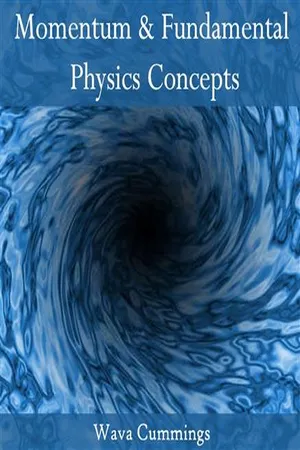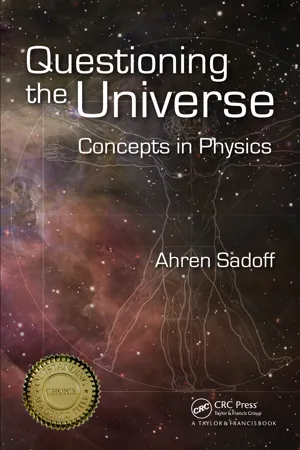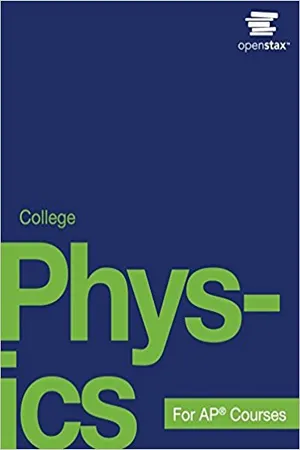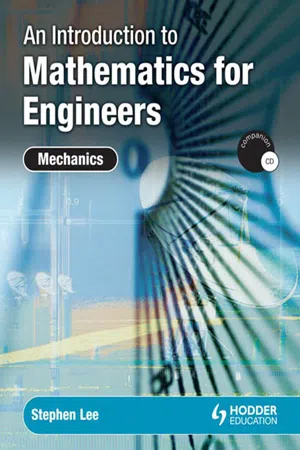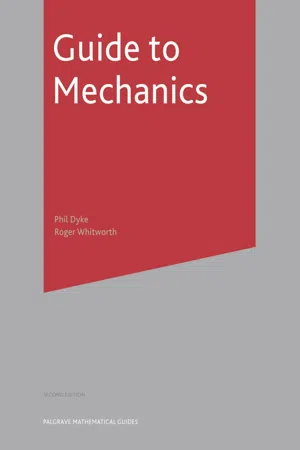Physics
External Forces
External forces in physics refer to the influences acting on an object from outside its immediate surroundings. These forces can include gravitational forces, electromagnetic forces, and contact forces from other objects. Understanding external forces is crucial for analyzing the motion and behavior of objects in the physical world.
Written by Perlego with AI-assistance
Related key terms
1 of 5
8 Key excerpts on "External Forces"
- No longer available |Learn more
- (Author)
- 2014(Publication Date)
- Learning Press(Publisher)
________________________ WORLD TECHNOLOGIES ________________________ Chapter- 6 Force Forces are also described as a push or pull on an object. They can be due to phenomena such as gravity, magnetism, or anything else that might cause a mass to accelerate. In physics, a force is any influence that causes a free body to undergo an acceleration. Force can also be described by intuitive concepts such as a push or pull that can cause an object with mass to change its velocity (which includes to begin moving from a state of rest), i.e., to accelerate, or which can cause a flexible object to deform. A force has both magnitude and direction, making it a vector quantity. Newton's second law, F=ma, can be formulated to state that an object with a constant mass will accelerate in proportion to the net force acting upon and in inverse proportion to its mass, an approximation which breaks down near the speed of light. Newton's original formulation is exact, and does not break down: this version states that the net force acting upon an object is equal to the rate at which its momentum changes. Related concepts to accelerating forces include thrust, increasing the velocity of the object, drag, decreasing the velocity of any object, and torque, causing changes in rotational speed about an axis. Forces which do not act uniformly on all parts of a body ________________________ WORLD TECHNOLOGIES ________________________ will also cause mechanical stresses, a technical term for influences which cause deformation of matter. While mechanical stress can remain embedded in a solid object, gradually deforming it, mechanical stress in a fluid determines changes in its pressure and volume. - No longer available |Learn more
- (Author)
- 2014(Publication Date)
- Academic Studio(Publisher)
________________________ WORLD TECHNOLOGIES ________________________ Chapter 2 Force Forces are also described as a push or pull on an object. They can be due to phenomena such as gravity, magnetism, or anything that might cause a mass to accelerate. Force SI symbol: F SI unit: newton Derivations from other quantities: F = m · a In physics, a force is any influence that causes a free body to undergo a change in speed, a change in direction, or a change in shape. Force can also be described by intuitive concepts such as a push or pull that can cause an object with mass to change its velocity (which includes to begin moving from a state of rest), i.e., to accelerate, or which can cause a flexible object to deform. A force has both magnitude and direction, making it a vector quantity. Newton's second law, F=ma, can be formulated to state that an object with a constant mass will accelerate in proportion to the net force acting upon and in inverse proportion to its mass, an approximation which breaks down near the speed of light. Newton's original formulation is exact, and does not break down: this version states ________________________ WORLD TECHNOLOGIES ________________________ that the net force acting upon an object is equal to the rate at which its momentum changes. Related concepts to accelerating forces include thrust, increasing the velocity of the object, drag, decreasing the velocity of any object, and torque, causing changes in rotational speed about an axis. Forces which do not act uniformly on all parts of a body will also cause mechanical stresses, a technical term for influences which cause deformation of matter. While mechanical stress can remain embedded in a solid object, gradually deforming it, mechanical stress in a fluid determines changes in its pressure and volume. - eBook - PDF
Questioning the Universe
Concepts in Physics
- Ahren Sadoff(Author)
- 2008(Publication Date)
- Chapman and Hall/CRC(Publisher)
23 4 Forces 4.1 THE FUNDAMENTAL FORCES What is a force? One answer is that it is a push or a pull. A better answer, that we will find to be more useful, is that it is an interaction between two or more objects. For most of our discussion, two objects will suffice. Forces are no strangers to us since we interact with all sorts of things every day. Below is a list of forces I have compiled. Before reading my list, it would be instruc-tive for you to take out a piece of paper and make your own list. Hopefully you will come up with some not on my list. Gravity Electric Weak nuclear Strong nuclear Centrifugal Magnetic Centripetal Friction Wind force Contact force (between surfaces) Muscular force Chemical Atomic I am sure you have noticed that my list is arranged in columns or categories. Let us look at the last column first. Both items are, in fact, not forces at all, but adjec-tives describing the action of a particular force. A centrifugal force is any force that is directed outward from the center of a curve when an object is traveling in curved motion. Similarly, a centripetal force acts inward toward the center of the curve. Gravity is usually the force most people list first, as I have. It, of course, is very important to us since it keeps us bound to the earth and the earth to the sun. The second column contains many familiar forces under one heading. Why? Because all these seemingly different forces are all due to only one force. Electric and magnetic are not separate forces, but just different manifestations of what is known as the electromagnetic force (we will discuss this in more detail shortly). The force that holds the atom together is not some special new force, but is just due to the electri-cal attraction of the negatively charged electrons to the positively charged protons in the nucleus. Similarly, different atoms interact by the attraction or repulsion of the electrons and protons in one atom acting on the electrons and protons of another atom. - eBook - PDF
- Paul Peter Urone, Roger Hinrichs(Authors)
- 2012(Publication Date)
- Openstax(Publisher)
For example, a cannon exerts a strong force on a cannonball that is launched into the air. In contrast, Earth exerts only a tiny downward pull on a flea. Our everyday experiences also give us a good idea of how multiple forces add. If two people push in different directions on a third person, as illustrated in Figure 4.3, we might expect the total force to be in the direction shown. Since force is a vector, it adds just like other vectors, as illustrated in Figure 4.3(a) for two ice skaters. Forces, like other vectors, are represented by arrows and can be added using the familiar head-to-tail method or by trigonometric methods. These ideas were developed in Two-Dimensional Kinematics. Figure 4.3 Part (a) shows an overhead view of two ice skaters pushing on a third. Forces are vectors and add like other vectors, so the total force on the third skater is in the direction shown. In part (b), we see a free-body diagram representing the forces acting on the third skater. Figure 4.3(b) is our first example of a free-body diagram, which is a technique used to illustrate all the External Forces acting on a body. The body is represented by a single isolated point (or free body), and only those forces acting on the body from the outside (External Forces) are shown. (These forces are the only ones shown, because only External Forces acting on the body affect its motion. We can ignore any internal forces within the body.) Free-body diagrams are very useful in analyzing forces acting on a system and are employed extensively in the study and application of Newton’s laws of motion. A more quantitative definition of force can be based on some standard force, just as distance is measured in units relative to a standard distance. One possibility is to stretch a spring a certain fixed distance, as illustrated in Figure 4.4, and use the force it exerts to pull itself back to its relaxed shape—called a restoring force—as a standard. - eBook - PDF
- Stephen Lee(Author)
- 2014(Publication Date)
- CRC Press(Publisher)
Forces and Newton’s laws of motion Nature to him was an open book. He stands before us, strong, certain and alone. Einstein on Newton 2.1 Force diagrams The picture shows a crate of medical supplies being dropped into a remote area by parachute. What forces are acting on the crate of supplies and the parachute? One force which acts on every object near the earth’s surface is its own weight . This is the force of gravity pulling it towards the centre of the earth. The weight of the crate acts on the crate and the weight of the parachute acts on the parachute. The parachute is designed to make use of air resistance . A resistance force is present whenever a solid object moves through a liquid or gas. It acts in the opposite direction to the motion and depends on the speed of the object. The crate also experiences air resistance, but to a lesser extent than the parachute. Other forces are the tensions in the guy lines attaching the crate to the parachute. These pull upwards on the crate and downwards on the parachute. All these forces can be shown most clearly if you draw force diagrams for the crate and the parachute. 2 Figure 2.1: Forces acting on the crate Figure 2.2: Forces acting on the parachute Force diagrams are essential for the understanding of most mechanical situations. A force is a vector: it has a magnitude, or size, and a direction. It also has a line of action . This line often passes through a point of particular interest. Any force diagram should show clearly ● the direction of the force ● the magnitude of the force ● the line of action. In figures 2.1 and 2.2 each force is shown by an arrow along its line of action. The air resistance has been depicted by a lot of separate arrows but this is not very satisfactory. It is much better if the combined effect can be shown by one arrow. When you have learned more about vectors, you will see how the tensions in the guy lines can also be combined into one force if you wish. - eBook - PDF
- Philip Dyke, Roger Whitworth(Authors)
- 2017(Publication Date)
- Red Globe Press(Publisher)
CHAPTER 2 Forces 2.1 Force as a vector We now introduce the concept of force. When forces are studied alone, the study is called statics . When they are studies in conjunction with kinematics, then the area of study is called dynamics . If a body changes its velocity, we conclude that a force acts upon it. Consider the motion of parachutists falling from an airplane: 1 At first, they fall vertically downwards as a result of the force acting on them in that direction (Figure 2.1(a)). Their speed increases as they move downwards. The vertical force involved is principally the weight , which is the force of the Earth's attraction acting on the parachutist. In addition, there are resistance forces . Resistance forces will always oppose motion when they occur. 2 After the parachute opens (Figure 2.1(b)), the parachutist's speed will eventually reach a stage when it stops increasing. In this case, the velocity is no longer changing and all the forces acting on the body must cancel out. In fact, the magnitude of the resistance force is then equal to the magnitude of the weight (see Chapter 5). In the case of a body in a state of equilibrium , that is, at rest, the total force acting on the body must also be zero. Consider the following cases of a body P in equilibrium: Resistance Resistance Weight Weight (b) (a) Figure 2.1 Parachutists 27 Tension Weight (a) Reaction Reaction Weight Weight (c) Thrust Weight (b) (d) (e) Normal reaction Friction Push Normal reaction Friction Weight Weight (f) Figure 2.2 Bodies in equilibrium 1 When the body is suspended by a string to hang freely (Figure 2.2(a)), the weight is supported by an upward force in the string, the tension . 2 When the body is supported on a spring from below (Figure 2.2(b)), the weight is supported by an upward force in the spring, the thrust . 3 When the body is resting on a horizontal surface, the weight is supported by an upward force supplied by the surface, the reaction or normal reaction (Figure 2.2(c)). - eBook - PDF
- John D. Cutnell, Kenneth W. Johnson, David Young, Shane Stadler(Authors)
- 2021(Publication Date)
- Wiley(Publisher)
86 CHAPTER 4 In order to successfully land the planetary rover, Curiosity, on the surface of Mars, NASA scientists and engineers had to take into account many forces, such as the thrust from the “sky crane” rocket engines, the tension in its towing cables, air resistance, and the weight of the rover due to the gravity on Mars, just to name a few. This chapter will discuss how forces influence the motion of objects. NASA/JPL-Caltec Forces and Newton’s Laws of Motion LEARNING OBJECTIVES After reading this module, you should be able to... 4.1 Discuss the concepts of force and mass. 4.2 Define Newton’s first law of motion. 4.3 Define Newton’s second law of motion. 4.4 Apply Newton’s second law of motion in two dimensions. 4.5 Apply Newton’s third law of motion. 4.6 Identify types of forces. 4.7 Define Newton’s law of universal gravitation. 4.8 Solve problems using the normal force. 4.9 Solve problems involving friction. 4.10 Solve problems involving tension. 4.11 Apply Newton’s first law to equilibrium problems. 4.12 Apply Newton’s second law to nonequilibrium problems. 4.1 The Concepts of Force and Mass In common usage, a force is a push or a pull, as the examples in Fig- ure 4.1 illustrate. In football, an offensive lineman pushes against his opponent. The tow bar attached to a speeding boat pulls a water skier. Forces such as those that push against the football player or pull the skier are called contact forces, because they arise from the physical contact between two objects. There are circumstances, however, in which two objects exert forces on one another even though they are not touch- ing. Such forces are referred to as noncontact forces or action-at-a- distance forces. One example of such a noncontact force occurs when 4.2 Newton’s First Law of Motion 87 a diver is pulled toward the earth because of the force of gravity. The earth exerts this force even when it is not in direct contact with the diver. In Figure 4.1, arrows are used to represent the forces. - eBook - PDF
- Fatih Gozuacik, Denise Pattison, Catherine Tabor(Authors)
- 2020(Publication Date)
- Openstax(Publisher)
• The pulling force that acts along a stretched flexible connector, such as a rope or cable, is called tension. When a rope supports the weight of an object at rest, the tension in the rope is equal to the weight of the object. • Thrust is a force that pushes an object forward in response to the backward ejection of mass by the object. Rockets and airplanes are pushed forward by thrust. KEY EQUATIONS 4.2 Newton's First Law of Motion: Inertia Newton's first law of motion or 4.3 Newton's Second Law of Motion Newton’s second law of motion or Newton’s second law of motion to solve acceleration Newton’s second law of motion to solve weight 4.4 Newton's Third Law of Motion normal force for a nonaccelerating horizontal surface tension for an object at rest CHAPTER REVIEW Concept Items 4.1 Force 1. What is dynamics? a. Dynamics is the study of internal forces. b. Dynamics is the study of forces and their effect on motion. c. Dynamics describes the motion of points, bodies, and systems without consideration of the cause of motion. d. Dynamics describes the effect of forces on each other. 2. Two forces acting on an object are perpendicular to one another. How would you draw these in a free-body diagram? a. The two force arrows will be drawn at a right angle to one another. b. The two force arrows will be pointing in opposite directions. c. The two force arrows will be at a 45° angle to one another. d. The two force arrows will be at a 180° angle to one another. 3. A free-body diagram shows the forces acting on an object. How is that object represented in the diagram? a. A single point b. A square box c. A unit circle d. The object as it is 4.2 Newton's First Law of Motion: Inertia 4. A ball rolls along the ground, moving from north to south. What direction is the frictional force that acts on the ball? a. North to south b. South to north c. West to east d. East to west 5.
Index pages curate the most relevant extracts from our library of academic textbooks. They’ve been created using an in-house natural language model (NLM), each adding context and meaning to key research topics.
